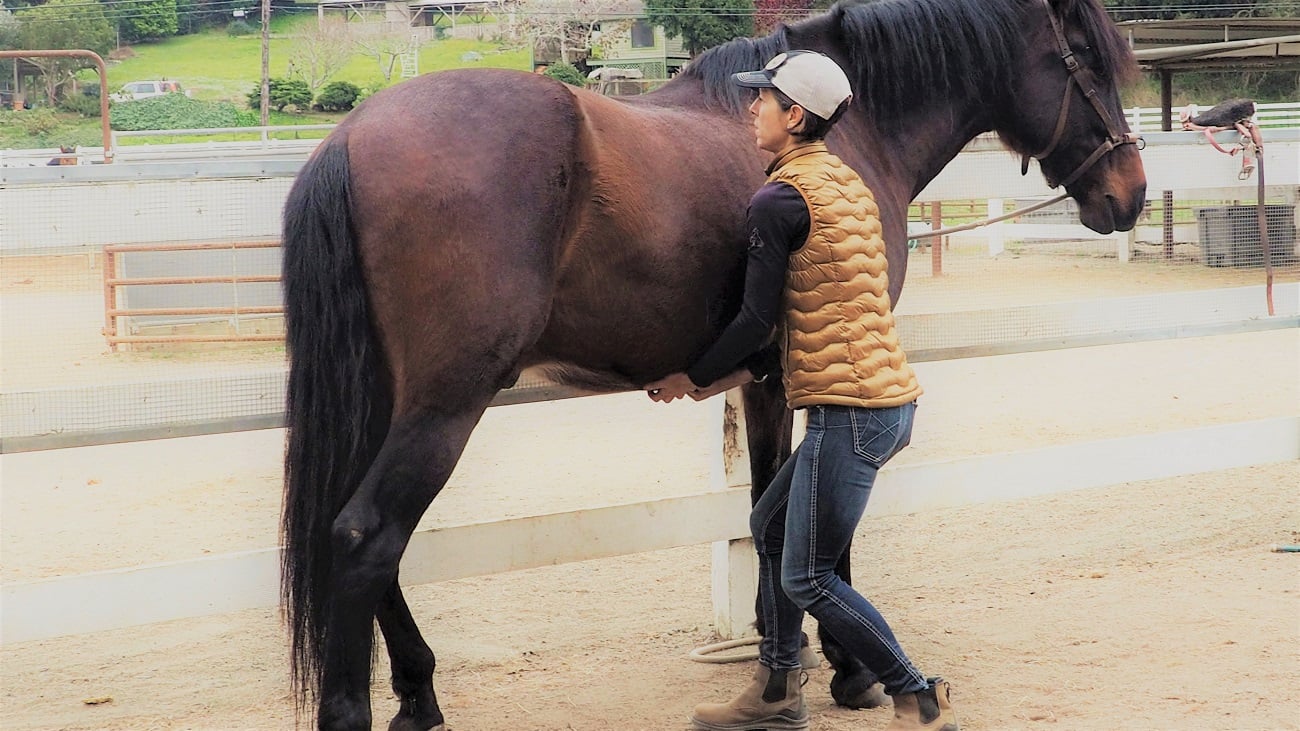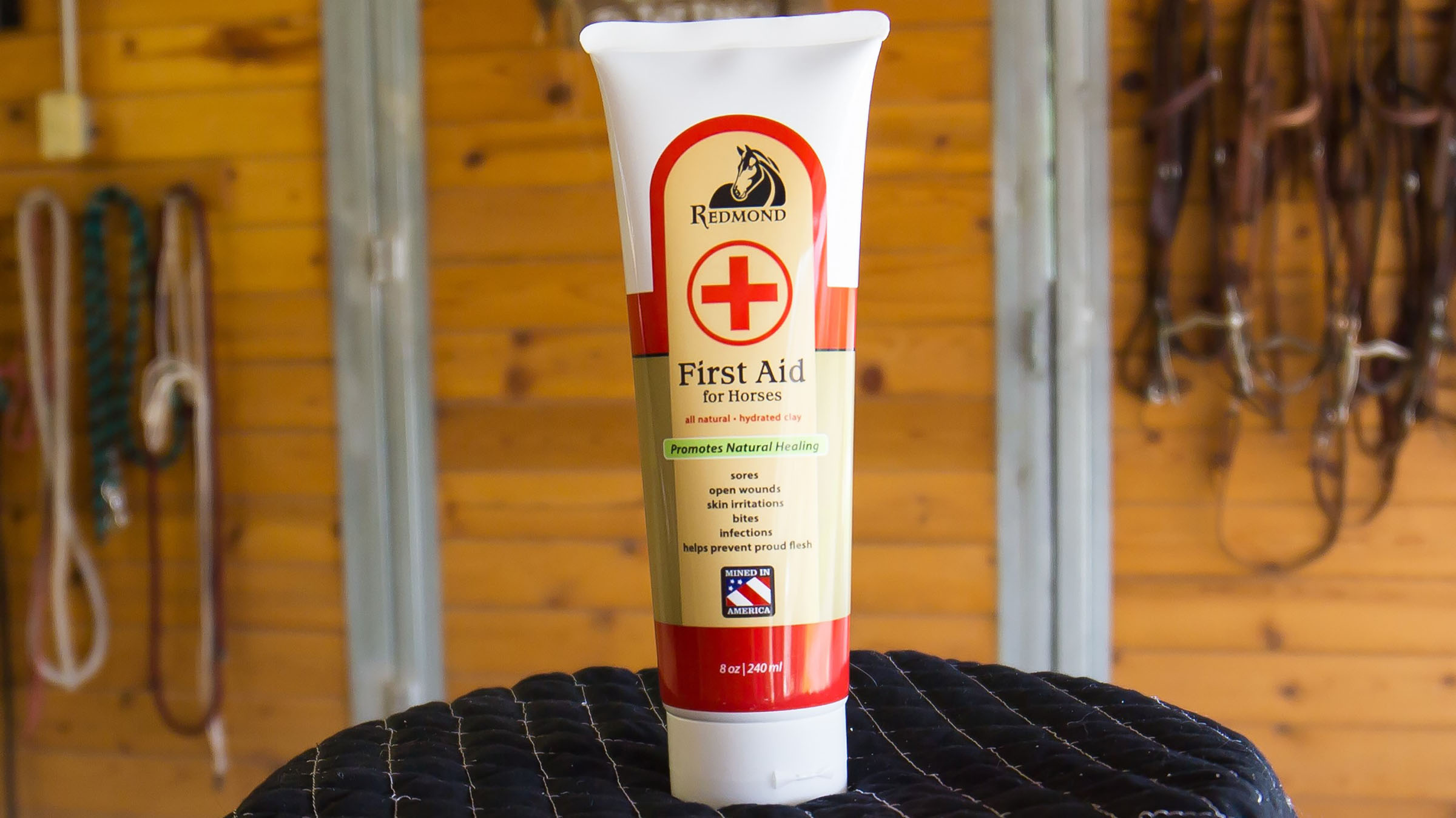Poultice for Horses: How to Reduce Swelling in Legs
July 20, 2022
Poultice for Horses: How to Reduce Swelling in Legs
Our horses work hard, and like humans, they get sore after training, trail riding, competing, trailering, and even standing too long. Often a side effect of their jobs is stiff, painful legs and a condition known as stocking up.
Caring for our equine athletes is just as important as caring for human athletes! We appreciate our horses and want to ensure they’re comfortable after a hard day’s work—and ready to go again tomorrow feeling their best. That's where an equine poultice can help.
Read on to learn about horse poultices, their benefits, and when and how to use them on your horse.
Quick Content Guide
- The best kind of clay for a poultice.
- What benefits to expect from a horse poultice.
- Using a poultice to treat a stocked up horse.
- 5 situations you should poultice a horse.
- How to apply poultice to horses' legs.
- Learn about Simply Clay equine poultice.
What is a Horse Poultice?
Perhaps you've heard about poultices but you're not sure exactly what they are or how to use them. You're in the right place! A poultice is a soft, moist paste usually made from natural clays and water. Mineral salt, Epsom salt, essential oils, or medicinal drops are also often added to improve effectiveness and speed up pain relief.
Poultices are applied topically to a horse's skin and used with or without wraps. The purpose of a poultice is to relieve soreness and inflammation, draw out infection or fluid, and promote healing. It can also help prevent injury to horses' legs by increasing flexibility. When you slather a poultice on your horse, you're practicing a tested and time-honored treatment done for thousands of years!
Bentonite Clay — Best Poultice for Horses
When picking a poultice, choose a product with a foundation of bentonite clay. Bentonite is a swelling clay with many talents, and it's particularly adept as a drawing poultice for horses. It removes pollutants, absorbs fluid, and swells many times its size, making it one of the most effective natural healing clays we know of. (Take a deeper dive into the benefits of bentonite clay for horses here.)
When used externally, bentonite excels at drawing fluid, infection, toxins, and contaminants. It also decreases inflammation and increases blood flow and oxygen to cells, speeding up the healing process. And because of its incredible drawing power, sodium bentonite in particular is one of the best poultices for horses and humans. You can mix powdered bentonite with water to make a poultice at home, or buy it premixed and ready to use.
What Does Poultice Do for Horses?
You now know what a poultice is and what it does. But why specifically should you consider using one on your horse? Here are some essential benefits:
- Soothes, protects, and heals insect and fly bites.
- Protects and heals cuts and burns (this easy-to-use bentonite clay wound cream is excellent for bites and superficial wounds).
- Heals hoof abscesses from puncture wounds or horseshoe nails. (Watch this video to see how to poultice a horse's hoof.)
Using a Poultice for Horses' Legs
Poultices are also commonly used to prevent and heal leg injuries and swelling. Horses' legs are incredibly powerful and allow them to do amazing things, but they're also quite fragile. There are 20 bones in a horse's leg, all connected by muscles and tendons vulnerable to damage during exercise or trauma. Applying a poultice keeps legs tight, prevents damage to soft tissue, and helps heal injuries when they do happen.
Here is how clay poultice benefits horses' legs:
- Improves blood circulation and oxygen.
- Draws out fluid and infection.
- Reduces inflammation and pain.
- Relaxes muscles and cools hot spots.
- Reduces swelling and tightens horses' legs.
- Treats and prevents stocking up.
Relieves Stocking Up in Horses
Let's talk a bit more about stocking up since it's a common condition in horses. Why do horses get stocked up, and how can a poultice help? Stocking up involves lymphatic fluid pooling in a horse's lower legs, causing swelling or edema. While it's a temporary problem, it shouldn't be taken lightly or ignored. Swollen legs affect a horse's ability, output, performance, and may lead to more serious injury.
We asked Lindsay Robins, a certified equine massage therapist, to weigh in on what causes horses to get stocked up and why poultices are a great way to treat it.
“Stocking up is usually a result of working your horse hard and then putting them in a trailer or stall to stand,” Robins said. “If your horse isn’t stretched out well enough or able to cool down long enough, leg swelling and soreness can occur. As an equine massage therapist, I can’t really get to or work on the joints and ligaments in horses' legs. In my experience, a poultice really helps reduce or prevent inflammation and swelling in those areas."
When Should I Poultice My Horse?
While poultices are super effective at relieving stocking up, they can also alleviate less obvious leg pain. Catch subtle signs of stress or injury early by checking your horse’s legs often, especially after strenuous exercise. Once your horse has cooled down, Robins recommends running your hands over your horse’s legs, paying close attention to the knees, hocks, and fetlocks. Look for these specific signs of discomfort:
- Puffy or swollen areas
- Hot spots or changes in temperature
- Tenderness
- Bumps, joint softness, or other abnormalities
5 Situations to Apply a Horse Poultice
While there’s no wrong time to poultice a horse, there are specific situations it's highly beneficial. Here are five Robins recommends:
- Trailering. Hauling is stressful on horses’ legs. Poultice before and/or after trailering to prevent and relieve stocking up and soreness.
- Before Exercising or an Event. Apply a poultice the night before an event or strenuous exercise to help prevent injury and keep horses' legs tight and ready to perform.
- Cooling down. Apply immediately after exercise to reduce swelling, cool hot spots, and jumpstart a quick recovery.
- Hoof Abscesses. Use a hoof poultice to heal abscesses and relieve foot soreness or bruising.
- Shoeing. Pack your horse's hooves before shoeing to soften the hoof and make it easier for your farrier to work with.
How Do You Poultice a Horse?
It's finally time to get your hands in the mud and learn how to put a poultice on a horse! Here are a few frequently asked questions, answers, and video to help you feel more informed.
Q. How do you apply poultice to a horse's legs?
If you're using a commercial poultice, first read the manufacturer's application recommendations. In general, however, these instructions apply. You can also watch the two-minute video below.
- Clean your horse's leg.
- Scoop a generous handful of poultice and spread it over the leg from knee to fetlock. Apply heavier in tendon areas and around hocks.
- Gently massage the mud into hot spots and around swollen areas.
- Leave the poultice on overnight, or for approximately 12 hours, then wash off with water.
If you're using wraps, follow steps 1-3 above then complete the process with one of these options:
- For everyday use: After applying the poultice, surround the leg with household plastic wrap to protect the poultice and keep it moist. Finish with a quilt and/or polo wrap.
- For intensive treatment: After applying the poultice, soak a brown paper sack in water and wrap it over the poultice. The paper and poultice combine to create more drawing power. Finish with a quilt and/or polo wrap.
Q. How long should you leave poultice on a horse?
Commercial poultice products vary, so check instructions for use. Generally, however, a poultice should be left on overnight or for approximately 12 hours.
Q. Do you have to wrap poultice on a horse's legs?
You can effectively use most poultices with or without wrapping. As noted in the instructions above, horse owners may choose to use a poultice by itself or layer on plastic wrap/wet brown paper and a quilt or polo to hold everything in place. If you're using a commercial poultice, make sure it's safe to use under wraps. While wrapping generally increases the effectiveness, however you poultice, your horse will benefit!
Elevate Performance with Redmond Equine Poultice
Looking for a good horse poultice? Simply Clay has your partner covered from head to hoof! It's made simply with natural Redmond sodium bentonite clay and pure essential oils. Simply Clay powerfully relieves hot, tired muscles and draws out pain and swelling. Plus, it comes with perks for you: our poultice washes off easily, never dries out in the bucket, and smells amazing. It's also sting-free and won't irritate your horse or your hands.

Many horse owners say Simply Clay outperforms other poultices. Jennifer Quarnberg is a former jockey who understands the importance of caring for horses' legs. She uses Simply Clay on her rodeo and racehorses to keep their legs healthy and help them reach faster times. Read her story below!
Meet Jennifer, a Simply Clay Fan and Former Jockey
During my 15 years as a jockey, I quickly learned when you’re running in a maiden or featured stakes race, every hundredth of a second counts. That's why keeping our racehorses’ legs resilient and the tendons tight was vital.
In my early career, I found that mixing Redmond Clay with water to act as a poultice worked well to keep our racehorses’ legs rejuvenated. There was a noticeable difference in how quickly the muscles were ready to run again. Tendons tightened quickly or stayed tight after a race, and overall, we just had better success keeping our horses sound.
After I quit horseracing, I started using a different brand of poultice on our family rodeo horses. While it worked okay, I didn’t see the same results and preventative maintenance that I did with Redmond—so I switched back.
Now I use Redmond’s Simply Clay Poultice. It’s the same Redmond Clay, but premixed, with essential oils added to pamper and help my horses relax. I love that I don’t have to mix it into a mud myself now. This product makes my life easier! It’s easy at hand, ready to apply, and I can quickly attack swelling in my horses’ legs at the first sign and not wait until it’s a big problem.
Simply Clay is the way to go for us. It worked on our racehorses for 15 years, and it’s great for our barrel and rodeo horses today.
-Jennifer Quarnberg
Simply Clay Poultice is a proactive way to help your horse stay in peak form, improve performance and feel pampered. Click below to purchase today.
Learn More
- Simply Clay is also effective at treating splints in horses. Read Alyssa's story here.
© Redmond Equine 2022. All rights reserved.
Related posts

Pros Share Tips & Answer Questions About Horse Stretches
Want to help your horse stretch regularly but not sure how? Get tips from two experts who explain why stretching for horses is worthwhile, and how to...
February 12, 2025

Redmond First Aid: Best Wound Care for Horses
Horse injuries happen! Fly bites and wounds occur on horses' legs and other areas. Be prepared with Redmond First Aid horse wound care and healing...




